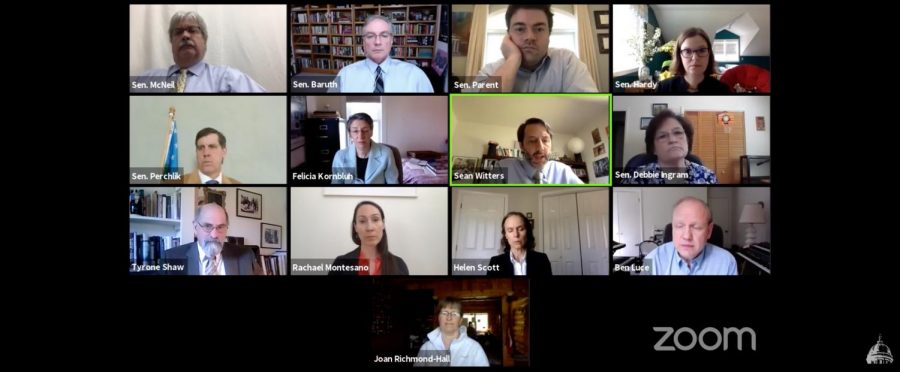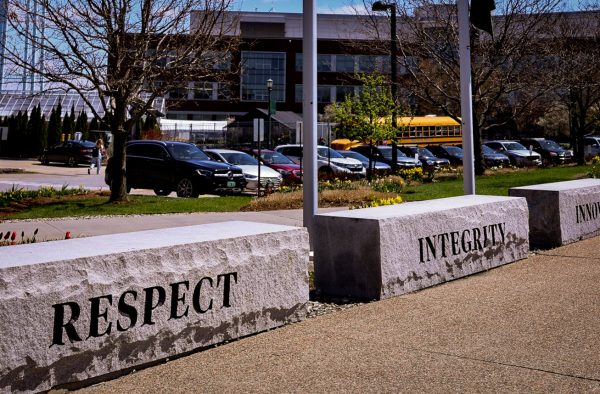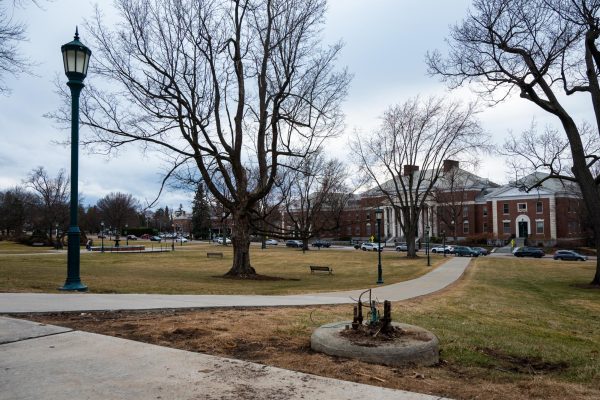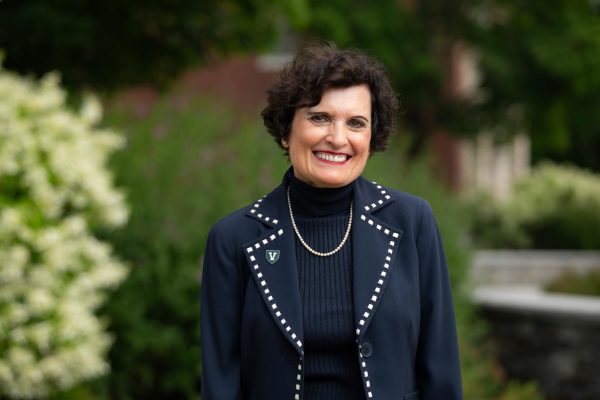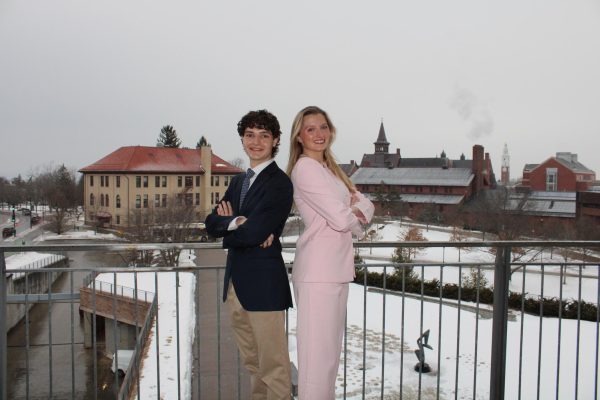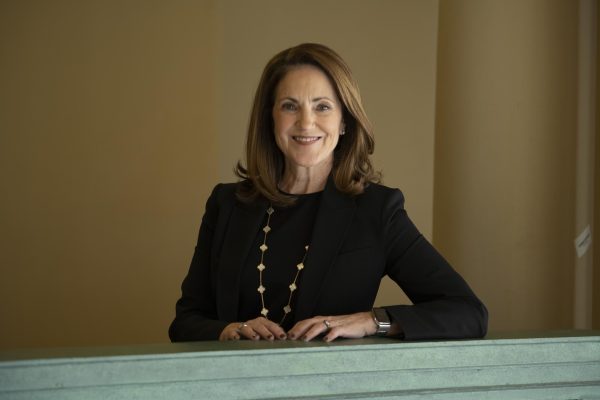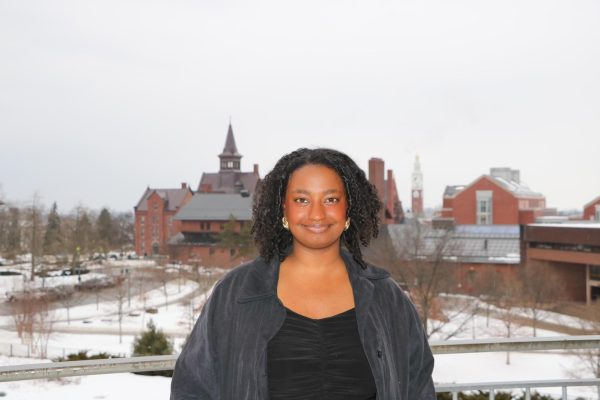UVM professors ask VT state government for protection from workload and pay cuts
Screenshot of Vermont Senate Committee on Education livestream
Members of the Vermont legislature met over Zoom May 21 and heard testimonies from four UVM professors.
Four UVM professors testified to the Vermont state legislature to ask senators for help in stopping proposed pay cuts and finding budget relief in other places.
UVM faculty members spoke to the Vermont Senate Committee on Education, demanding protection from non-tenure track faculty pay and workload cuts proposed by UVM administration in response to the COVID-19 pandemic during a May 21 livestream.
“The administration’s planned budget cuts will bring maximum pain with minimum gain,” said Professor Helen Scott, who testified to the Committee. “Those with the least will suffer the most.”
In early May, a notice from Provost Patty Prelock, Vice President of Finance Richard Cate and President Suresh Garimella was sent out to college deans, asking them to make budget cuts for their respective colleges in response to financial strain caused by COVID-19.
As a result, non-tenure track faculty in the College of Arts and Sciences will see a 25% reduction in workload and pay, according to a May 7 email from dean William Falls.
“After a 25% reduction in my salary, I will still be a full time lecturer, but my salary will be 41% below the livable wage, yielding hardship, frustration and pain for me as a single parent,” said Rachael Montesano, a non-tenured lecturer in the romance languages department and a single mother of two.
However, cutting non-tenured faculty workloads isn’t the only measure the University is taking to help promote UVM’s financial security, according to UVM Spokesperson Enrique Corredera in a May 26 email.
“Administrative support units will take their 11th budget cut since 2008,” he stated. “Academic units have also taken budget cuts multiple times over the past decade. Senior administrators are taking salary reductions—many are forgoing a month of salary.”
Deans of colleges will also take a voluntary cut of 8.3%, according to memos sent to their colleges.
Garimella himself gave up his base pay for the month of April, according to an April 6 press release. This accounts for 8% of his base pay salary and 6.3% of his total pay, at $40,000.
Even with reduced workloads and pay, lecturers will still get benefits including retirement, healthcare, medical leave and free tuition for themselves and their children, according to Corredera.
At the senate meeting, testifying faculty argued that the proposed faculty cuts were unfair, putting too much financial burden on those who can’t afford a lower salary.
“Part time teachers teach essential courses for little compensation, keep programs running and ensure continuity for our students,” Scott said. “We should protect faculty, staff and students, and invest in the lifeblood of our institution, which is the pursuit of knowledge.”
Due to these faculty pay cuts, many non-tenure track faculty will face financial strain, especially those with families, said Montesano.
“I should not have to put myself into financial instability in order to educate our Vermont students,” she said.
Montesano’s testimony echoed a letter she sent to Garimella May 10 detailing challenges herself and other non-tenure faculty will face with pay cuts.
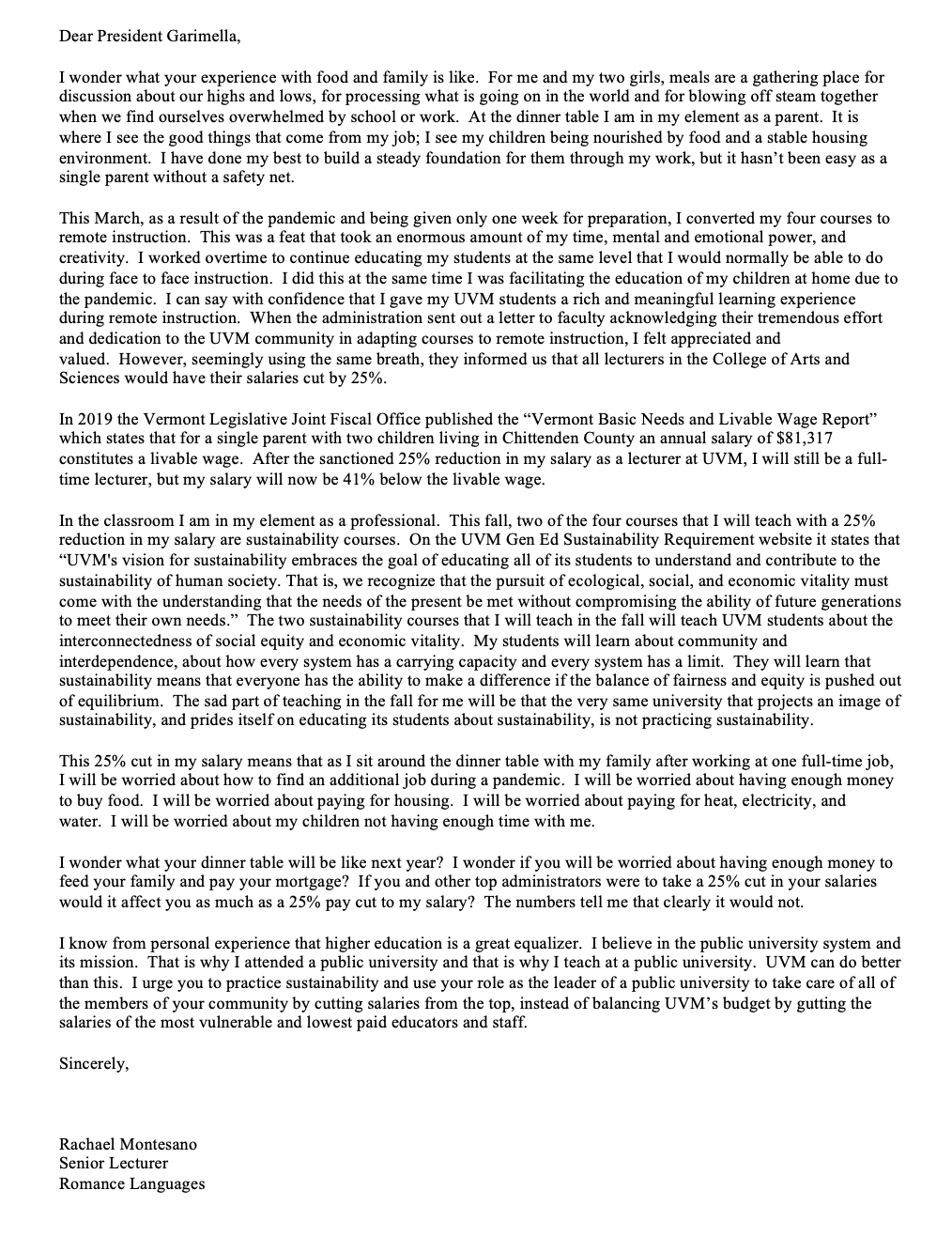
Montesano has not received a response from Garimella as of May 26. Corredera did not respond to request for comment on the letter.
Professor Felicia Kornbluh pointed out during her testimony that a 6% cut from the 72 top executives at UVM would save the same amount of money that a 25% cut from 72 non-tenured professors would save.
The Cynic fact checked this and found that a 6% cut from the 72 highest paid executives’ base pay would yield $288,677 less than a 25% cut from 72 non-tenured professors.
However, an 8% cut from the 72 top executives would yield roughly the same amount as a 25% cut from 72 non-tenured professors, both freeing up roughly $1.18 million for the University.
“If cuts are necessary, then they must come from the people with the greatest security and greatest income, not the people who work the hardest and make the least,” Kornbluh said.
Faculty cuts also needlessly jeopardize faculty members’ relationships with students when savings could easily be found elsewhere, said Sean Witters, a non-tenure track lecturer of English.
“We have money for a $3 million bridge from a dormitory to the library, for a $95 million new gym, but not for the deep institution knowledge that resides in the faculty,” Witters said. “I want to have the chance to connect with my students. That’s what I’m really asking for.”
To avoid increasing UVM’s debt level, the University has delayed borrowing $30 million to fund construction of the new multipurpose facility, stated Corredera.
The four professors who testified are part of UVM United Against Cuts, a recently-formed group of community members who are pushing back against the recent cuts, most recently at a May 14 car protest in Burlington.
In an interview before the testimonies May 21, Senator Debbie Ingram who sits on the Vermont Senate Committee on Education said once all the evidence is collected from UVM faculty members, the committee will present the issue to other state legislators.
Ingram said she is confident that there will be majority support. If this is the case, legislation protecting faculty rights will be written.
Though the state government cannot control budgetary decisions made within the University, legislative action can still influence the institution by withholding funding, Ingram said.
“We can’t interfere with administrative decisions, but we can say that we will not approve of giving federal money unless UVM treats faculty fairly,” Ingram said.
During their testimonies, the professors also stressed that UVM administrators need to be more transparent about the budget to both faculty and students.
“We want to see the same information that’s available to our top administrators,” Kornbluh said. “We want to know what their sense is for the bottom-line need for cuts, and we want to be able to deliberate and negotiate with them.”
Overall, Chittenden county legislators support non-tenure faculty demands for different budget cuts, Ingram said.
“Faculty cuts should be on workers who already make so much that cuts would not be as detrimental to them and their families,” she said. “UVM’s core business comes from education, so cuts should not be made on the teachers who actually work with students.”
Burlington city councilors also support budgetary planning that would not impact non-tenure track faculty and staff as much, according to a May 22 open letter sent to Garimella from six city counselors.
“We strongly believe that all workers must be treated with respect, dignity, and fairness,” the letter stated. “We urge you and the UVM leadership to respect the rights and needs of Union and non-Union employees in finding solutions that will also meet the academic and financial needs of the University.”
The letter was signed by city councilors Sarah Carpenter, Chip Mason, Karen Paul, Franklin Paulino and Joan Shannon.
“We have great working relationships with both the state and the city, and we always welcome their feedback,” stated Corredera when asked to comment on the possibility of legislation affecting how UVM deals with budgetary shortfalls.
An online press conference organized by UVM United Against Cuts will take place on May 28 to “protest austerity measures in education at every level,” according to a May 26 press release.


